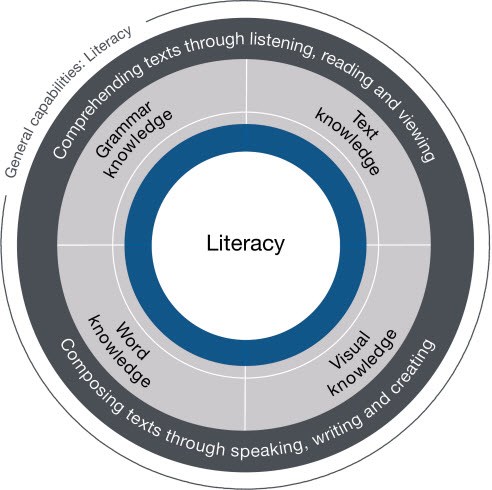Literacy and Numeracy Capabilities in the Australian Curriculum: What do teachers need to know?
Educators
in the 21st century are expected to know more about Literacy and
Numeracy Capabilities in the Australian Curriculum, and how they apply to other
subjects other than Maths or English. Additionally, as an educator in today’s
secondary schools, you are expected to understand what literate and numerate
thinking is, and know what related elements there are in both literacy and
numeracy.
So
what does Literacy Capabilities mean in the context of the Australian
curriculum? According to the Australian Curriculum and Assessment Reporting
Authority, students make progress towards being literate when they progress the
information and skill that they know, using it to understand and use language with
confidence in the environments of school, home and in broader society (Australian
Curriculum and Assessment Reporting Authority [ACARA], n.d.).
In
terms of encouraging students to apply literate thinking, educators can
encourage students apply literate thinking by having them to apply their
literary knowledge to understand and analyze information, not just in other
subjects in school, but in real life situations requiring comprehension skills
as well. It goes further to explain that using literacy thinking to become
literacy capable isn’t just about retaining skills and information, but is
actually about using a broad range of literary skills, to become independent
thinkers and learners capable of being open to new ideas, and being able to
scrutinize and interrogate the interpretations and prejudices in texts (ACARA,
n.d.). Figure 1 shows that the key points in being literacy capable by using a
literary mindset, which can also be succinctly summarized into six concepts that
are mutually related.

Figure
1. Key Ideas for Literacy. Reprinted from Australian
Curriculum and Assessment Reporting Authority. Retrieved from https://www.australiancurriculum.edu.au/f-10-curriculum/general-capabilities/literacy/
In
regards to numeracy capability, students make progress in their numeracy capability
through learning mathematical concepts and skills, recognizing their use in
other contexts, and using those abilities broadly in other areas of their life,
whether it be in other subject areas or in the wider world (ACARA, n.d.). It is
a similar situation with numerate thinking, as students can practice their numerate
thinking by applying it to broader contexts in other subjects or in real life. For
example, a student may use mathematics to plan and calculate a party budget, or
to understand the concept of magnitude when learning about the Richter scale in
a Geology class, thereby demonstrating their ability to apply numeracy concepts
in a wide range of contexts. Similar to literacy, there are also six key ideas
for Numeracy, which teachers are expected to help their students understand to
become numeracy capable (Fig. 2).

Figure 2. Key ideas for
numeracy. Reprinted from Australian
Curriculum and Assessment Reporting Authority. Retrieved from https://www.australiancurriculum.edu.au/f-10-curriculum/general-capabilities/numeracy/
So now we know what Literary and
Numeracy thinking and capability is, but how are they interrelated? Both
Literacy and Numeracy skills require the student to develop their comprehension
and reasoning skills, and both require the student to explore new ways to use
their learned skills in different contexts. Developing numeracy capabilities
helps students understand maths related words, charts, statistics and concepts
in literacy based subjects, and developing literacy skills helps in
understanding maths problems involving word problems and comprehending
instructions (ACARA, n.d.). As Hogan (2000) explains, in a literacy heavy
subject such as History, students use their numeracy skills to analyze
historical data, as well as making sense of scaled timelines and historical
dating systems. Literacy skills are also often needed in numeracy heavy
subjects, for example there are many maths problems that are presented in story
form, which requires literary comprehension skills, not to mention the useful
ability to process, understand a range of texts with mathematically related
terms in disparate contexts (Zygouris-Coe, 2015).
To sum up, the terms Literacy and Numeracy encompass not
just the subjects of maths and English, but include a broader range of skills
that can be used on other interrelated contexts and subjects as well. As for
the concepts of literate and numerate thinking, in an educational context it
simply means encouraging students to think literately and mathematically in in
disparate situations in and out of school. These aforementioned points are
critical for teachers to understand when incorporating literacy and numeracy
into their curriculum.
Comments
Post a Comment